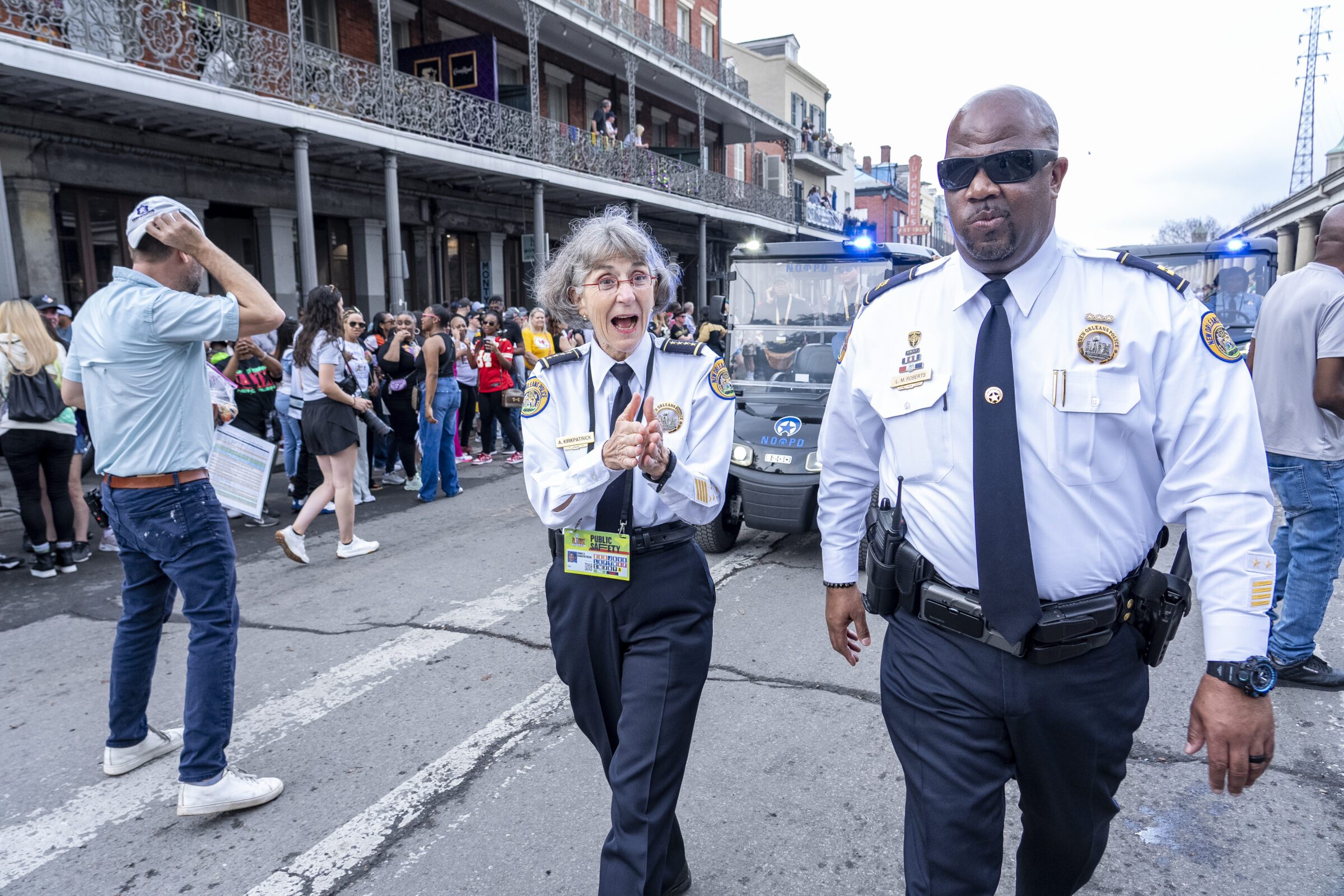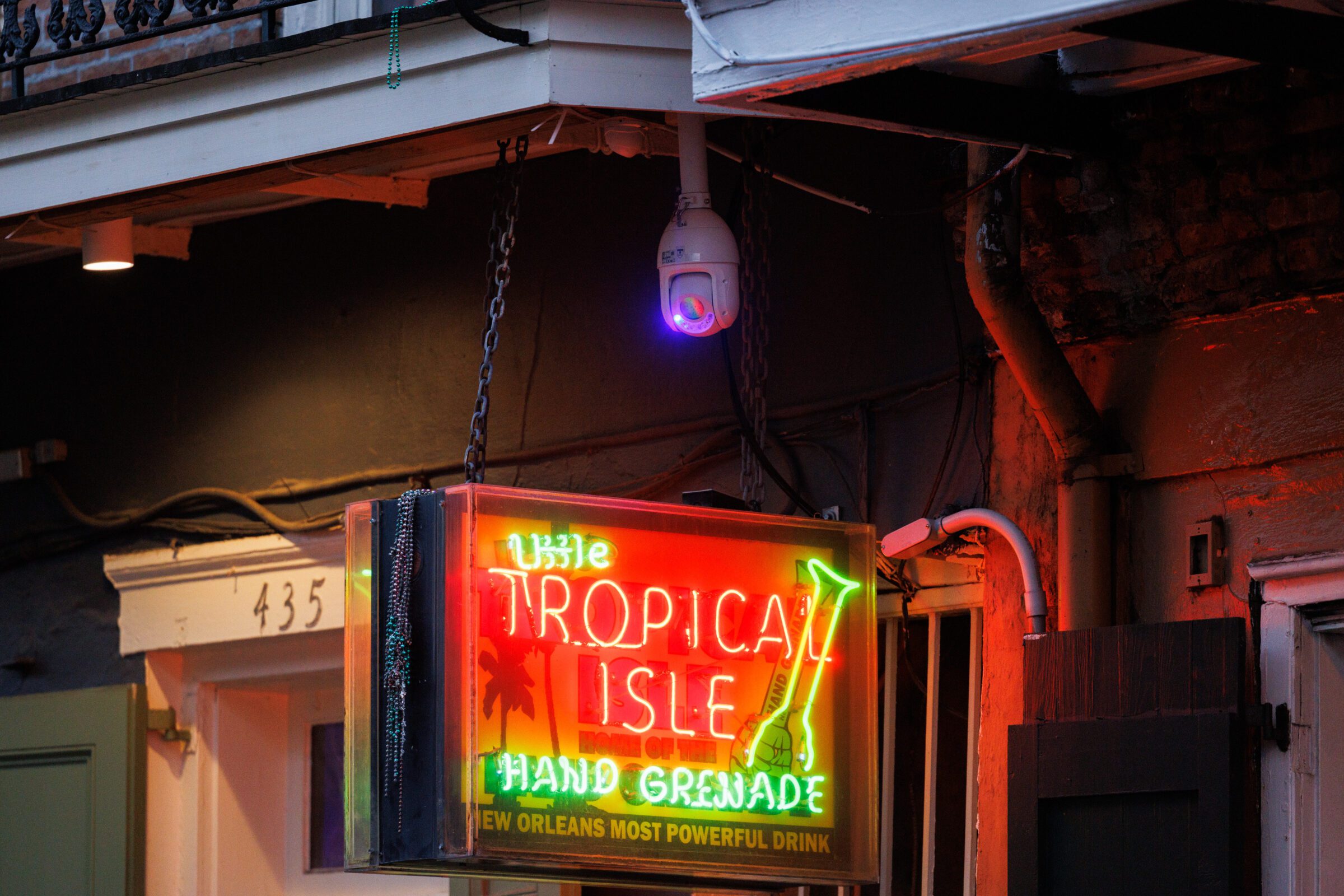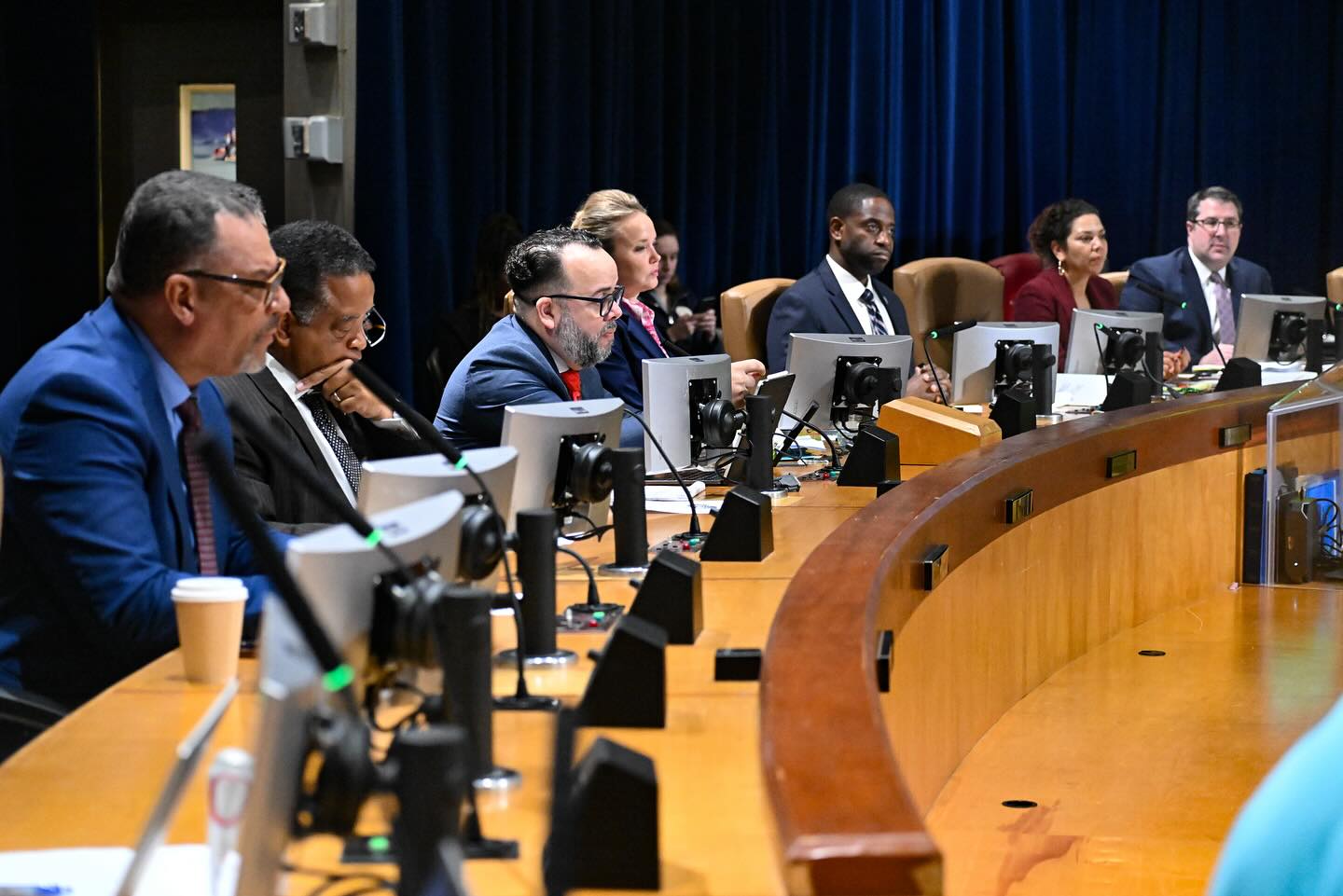New Orleans May Hand Its Police Live Facial Recognition Tech. Critics Warn It’ll Help ICE.
The city says it won’t lend this tool to ICE for surveillance. But a state law requires that local officials assist ICE, and New Orleans also wants to end a court order restricting compliance.
| August 15, 2025

The cameras are mounted across downtown New Orleans: hanging from balconies on Bourbon Street, bolted to the exterior walls of bars and four-star hotels throughout the French Quarter. For two years, they scanned live footage of unwitting passersby, compared it against a list of wanted suspects, and sent potential matches to New Orleans police officers via an app, despite a city policy forbidding the use of automated facial recognition technology for surveillance.
The entity behind this operation is not the city’s police department but a nonprofit called Project NOLA, which buys and places the cameras, maintains the database of suspects, and even monitors the footage in an office on the University of New Orleans campus.
After the New Orleans Police Department’s informal arrangement with Project NOLA was uncovered by The Washington Post in May, the city has moved to officially authorize the use of live facial recognition analysis.
The city council is currently scheduled to vote next Thursday on an ordinance that would make New Orleans the nation’s first city with a formal program that uses facial recognition to surveil people in real time, according to the Post. [Editor’s note: The council has postponed this vote to Sept. 11.] The proposal would expand on the council’s 2022 vote authorizing police to use facial recognition technology, but only as a last resort and only to investigate crimes after the fact.
City officials insist that their new ordinance has clear protections for civil liberties. In particular, they stress, the ordinance explicitly states that data gleaned from these cameras cannot be used for immigration enforcement.
But local advocates for immigrants’ rights insist that those protections are not strong enough to withstand state or federal pressure on the city to hand over information. They warn that New Orleans’ Democratic leadership might be setting itself up to hand ICE a powerful new tool.
Advocates point, in part, to a new state law, Act 399, which went into effect Aug. 1 and establishes criminal penalties for law enforcement officials who decline ICE requests for cooperation. “If ICE were to ask for any records that NOPD would hold, they would have to risk violating a state law and facing criminal charges [to comply with] what the ordinance is asking them to do,” Sarah Whittington, advocacy director at the ACLU of Louisiana, told Bolts.
Should federal agents get access, Whittington said, “this technology would allow them to use facial recognition to try and further their reach into our communities and track people.” She thinks ICE could “use the network of cameras to target specific people and communities and wait for the technology to alert them to a match and then use it to track that person to a location for arrest—likely away from their home and away from the public.”

ICE has moved aggressively to obtain sensitive data from police and other city departments this year, including in places where local officials have been reluctant to hand it over. And many GOP-led states are preempting immigration protections enacted by Democratic cities, threatening local officials with jail, criminal punishments, or removal from office if they refuse to collaborate with ICE. This has pressured some officials into compliance; the mayor of Orange County, Florida, said this month he only agreed to federal demands to transport ICE detainees “under extreme duress.”
The NOPD is currently constrained from asking about immigration status or partaking in almost all immigration enforcement activities by a federal consent decree, which supersedes state law. But the decree is not long for this world: A judge in January granted a joint request by New Orleans officials and Louisiana Attorney General Liz Murrill for a “sustainment period” that would wind down federal monitoring over two years.
The protections may end even sooner; the city and Murrill are currently asking a federal appeals court to terminate the consent decree immediately. That’d remove a core bulwark against data-sharing, which has some advocates very nervous about the facial recognition ordinance. “If they approve this, it’s going to be catastrophic,” Edith Romero, an organizer with the groups Union Migrante and Eye on Surveillance, told Bolts.
Council Member Eugene Green, Jr., who co-authored the ordinance, dismissed concerns about the exigencies created by Act 399 in an interview with Bolts. “I don’t expect police officers to, for example, be arrested because they aren’t following state and federal guidelines,” he said. But he also said questions about his proposal’s immigration ramifications would be better directed at a “state or federal official or lawyer,” saying, “I am in the business of overseeing the creation of and the implementation and operation of city laws.”
“Even if we prohibited the police from ever, ever accessing a particular resource, and the federal government said that you must do certain things,” Green said, “the jury is out as to what your response can be to that.”
When Louisiana’s larger, Democratic cities have not proactively moved to forge ties with ICE, ultraconservative state leadership has sought to remove the element of choice. Last year, the legislature passed a law, Act 314, outlawing so-called “sanctuary city” policies, which prohibit local law enforcement collaboration with federal immigration officials.
This year, they went further with Act 399, which makes it a felony for local officials to intentionally ignore or reject any formal request for collaboration from ICE, Customs and Border Protection, or USCIS, the federal agency that oversees immigration and naturalization applications. These requests include immigration detainers—warrantless requests by ICE to hold someone in custody after they are legally due to be released from jail. Act 399 also criminalizes releasing an undocumented person from custody without notifying ICE first.
According to UNC law professor and immigration law expert Rick Su, Louisiana’s latest law is in keeping with a larger recent pattern of red states imposing active requirements to cooperate with ICE on localities. “The trend in recent years has been moving from prohibitions to more mandates,” he told Bolts.
Even setting aside these new state laws, experts say the only real way to prevent ICE from accessing sensitive data is to forgo collecting it in the first place. “It is very hard to wall off data collected from lawful government use,” George Washington University law professor Andrew Guthrie Ferguson, the author of several books on big data policing, told Bolts. “The simple truth of digital surveillance is that if you build it, it will be used, and likely used against those with the least amount of political power.”
As it stands, New Orleans police, who patrol the city, and the sheriff’s department, which oversees the jail, are afforded a degree of protection from the state’s attempts to force cooperation: Two federal consent decrees restrict both departments from collaborating with ICE in most cases.
As part of a comprehensive 2012 agreement with the federal government that, among other goals, aimed to cut down on racial profiling, New Orleans police officers cannot legally ask someone about their immigration status during a traffic stop. “We still have ICE activity, but they’re not doing it in a systemic way through the police,” Romero said.
Moreover, because of a settlement finalized the next year following a lawsuit brought by two men who were held for months past their release dates with no due process, the sheriff only complies with immigration detainers in the most serious cases. In a recent court filing, ICE stated that the department has only granted 1.2 percent of its requests over the last four years. Sheriff Susan Hutson, a first-term Democrat, refused this summer to change the office’s immigration policies over Act 399, pointing to the fact that the consent decree’s authority supersedes state law.
The state attorney general, Murrill, has moved to terminate both decrees, and the city is also asking the Fifth Circuit to free NOPD from federal monitoring. (The city attorney’s office did not respond to a request for comment on how these efforts would affect compliance with ICE.) Court proceedings are ongoing, with no clear timeline for a decision in either case.
If the consent decrees go, Romero said, “it means no guardrails will exist against police-ICE collaboration, or jail-ICE collaboration.”
Some local leaders have minimized the unorthodox nature of Project NOLA, which has been around for over a decade and also has some 5,000 traditional surveillance cameras scattered across the city.
Long before its founder, Bryan Lagarde, began installing cameras with facial recognition software in 2023, he had been forging relationships with local officers who knew of his larger camera network and would go to him for investigative help. “If Bryan Lagarde calls an officer and says, ‘I think a crime is occurring on the 1800 Block of Bienville,’ that’s no different than Miss Johnson looking out of her window and saying, ‘I think a crime is occurring on 1850 Bienville,’” District Attorney Jason Williams told The Washington Post in defense of the program.
According to Lagarde, state and federal law enforcement entities—such as the U.S. Marshals Service, ATF, DEA, and the Louisiana State Police’s Troop Nola, which patrols New Orleans at Governor Jeff Landry’s behest—still have access to the automated alert system, which NOPD’s chief temporarily suspended in April. That means their deputies receive an automatic notification when the cameras pick up a match with someone on Lagarde’s suspect database, which he updates with special requests from those agencies.
Lagarde insists that his company does not and will not cooperate with ICE, and adds that it would be logistically impossible for ICE to retrieve footage without his permission as he is the only one with direct access to the data.
“If used responsibly, it can be an amazing thing,” Lagarde told Bolts. “We’re saving lives.”
The pending ordinance, which was introduced by Green and Oliver Thomas Jr., a city councilor and current mayoral candidate, would formalize the operation. It may also end up bringing live surveillance entirely within the city’s aegis.
The ordinance would authorize the use of live facial recognition technology for missing persons searches as well as for the investigation of a list of 49 actual or attempted crimes, which range from murder to purse snatching and drug possession with the intent to distribute.
Green argues that this technology is a critical aid in the fight to catch alleged criminals, referencing two recent cases where Project NOLA’s cameras identified a suspect. “What about the fact that the citizens are safer because those two people are off the streets only because of the use of facial recognition technology?” he asked. “It can give and it can take away. But I’m not going to ignore the fact that it can give safety and comfort to our residents.”
“Everybody has it and uses it,” he added. “Please point to me the instances where the technology has been abused.”

The ordinance leaves open the possibility for local police to enter into a formal contract with Project NOLA, but it would also allow NOPD to create its own live facial recognition system rather than rely on a private company. Anne Kirkpatrick, the city’s police chief, has said she wants the department to run the system without relying on Project NOLA; Green also told Bolts that he trusts the department to use such technology over a nonprofit group because the city has established accountability mechanisms in place.
The ordinance contains various limits on the technology beyond immigration enforcement, including a prohibition on using data to investigate people seeking or providing abortions or consensual sex between adults.
But Su, the immigration law professor, says the protections embedded in the ordinance on facial recognition could run afoul of Act 399’s provision around “refusing a lawful written request for cooperation” from federal immigration officials. Once the federal consent decree ends, Su says it’s entirely conceivable that ICE could demand that NOPD hand over personal data gleaned from the live facial recognition technology—and under state law, it would be a felony to refuse.
“We’re seeing more and more signs, especially in ‘sanctuary cities,’ where the federal government’s requests are getting bigger and bigger,” Su said. “They want more and more.”
Earlier this year, the Department of Justice sued New York, hoping to overturn a state law that bars the DMV from sharing drivers’ license holder information with immigration officials. Last month, the Department of Agriculture told states they had to hand over personal data, including immigration status, for everyone enrolled in the food assistance program SNAP; while 20 Democratic AGs have sued in response, at least one state, Vermont, has already complied, offering the federal government some 64,000 names.
NOPD did not reply to a request for comment. Lagarde told Bolts that the city’s contracting with him to perform live facial recognition analysis, rather than trying to set up its own cameras and software, would maintain a layer of protection from ICE since he would refuse to perform searches for immigration enforcement purposes. The ACLU of Louisiana is skeptical of Lagarde’s view that ICE’s reach wouldn’t extend to Project NOLA, telling Bolts that ICE could subpoena the data the organization possesses.
Advocates opposed to the ordinance have convinced at least one New Orleans council member, JP Morrell, that the prohibitions included in the ordinance are not sufficiently strong to overcome the mandates of Act 399.
“There’s the city ordinance that says, ‘Don’t use it for immigration.’ And then there’s a state law that says, ‘If you don’t cooperate with ICE, you go to jail,’” Morrell told local news site WDSU to explain why he plans to vote no. Morrell is one of seven city council members; none besides Green, the legislation’s co-sponsor, responded to Bolts’ requests for comment.
Green told Bolts that codifying this technology at a time of mounting federal government incursion doesn’t worry him.
“I’m not concerned. I’m not concerned. I believe—I’m not concerned because I trust our police department, I trust our city. I trust the oversight that is in place,” he said.
Su argues, though, that the city council’s attempts at safeguarding facial recognition technology seem to be designed according to an “an old idea” of how governments interact: “federal insulated from state, state insulated from local, and you can still have some stability or control for your own little community.”
In the era of Trump 2.0, he said, those rules no longer apply: “We’re probably at the lowest point with regard to local democratic control.”
Sign up and stay up-to-date
Support us
Bolts is a non-profit newsroom that relies on donations, and it takes resources to produce this work. If you appreciate our value, become a monthly donor or make a contribution.




